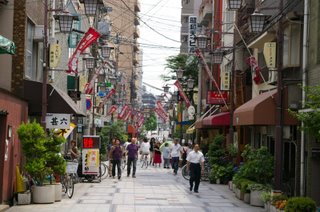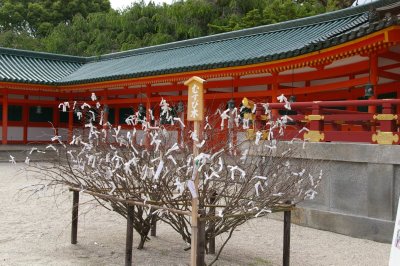

I put lots of pictures... it's time for some stories :) My first night in Kyoto I slept at a backpacker hostel, partly because it was cheaper, but also because there was nothing else available short of four stars hotels. (generally speaking, lodging in Japan was a bit of a problem, but more about that later)
At this hostel I've met two canadians and a family of 8 Swedish poeple, the youngest of which had no more than a couple of months :)
Speaking of canadians, they are everywhere. It is like an epidemic, any corner you turn, any street you walk, anything you do, anywhere you go in this big world you will find at least one canadian, usually more. It is ironic, it is not like they are crowded and searching for some privacy :) They hunt in packs, but they often travel alone, usually for very long periods of times, months at a time. Often they stop and work for a while as English teachers or other humanitarian purposes in less fortunate countries. They are interesting specimens, invariably they all look happy, optimistic and excited to be there. In general people like them because they are friendly and docile -
So when the swedish family guessed that I am from Vancouver, it was a huge compliment. I asked them what gave me away and they reply that they had their doubts, but in the end it was the cycling style that gave me away: the vancouver cycling stroke is known to be aggresive yet very athletic with a specific rythm to it; some people say that Herbert von Karajan was able to conduct the entire Mozart's Marriage of Figaro with ear plugs, just by looking at a promotional video of Stanley park.
It still remains the question of how did I end up cycling around Kyoto... Bikes here are very cheap to rent, around $6 / day; they have city bikes that are very confortable and you can store the camera in the little front storage compartment (see fig). If it does not rain I must say that this is the ideal way to see Kyoto, oppinion shared by a fellow Duch bycicle expert that I met, one may say by chance, after we collided because he was looking for traffic in the wrong dirction.
Kyoto is big enoug that you cannot traverse it easily by foot, but it is just small enough that you can go from one end to the other in about 45 min of normal pace. It is quite comfortable and you can get a taste of the less touristic sites.
Since the day I came was rainy, the first thing I did was go to a shrine and pray to stop raining. It worked, I have over 30 derees and sunny all days. I must have drinked anywhere between 10 and 20 liters of liquid a day. The lemonade presented above was my favourite :)

















































